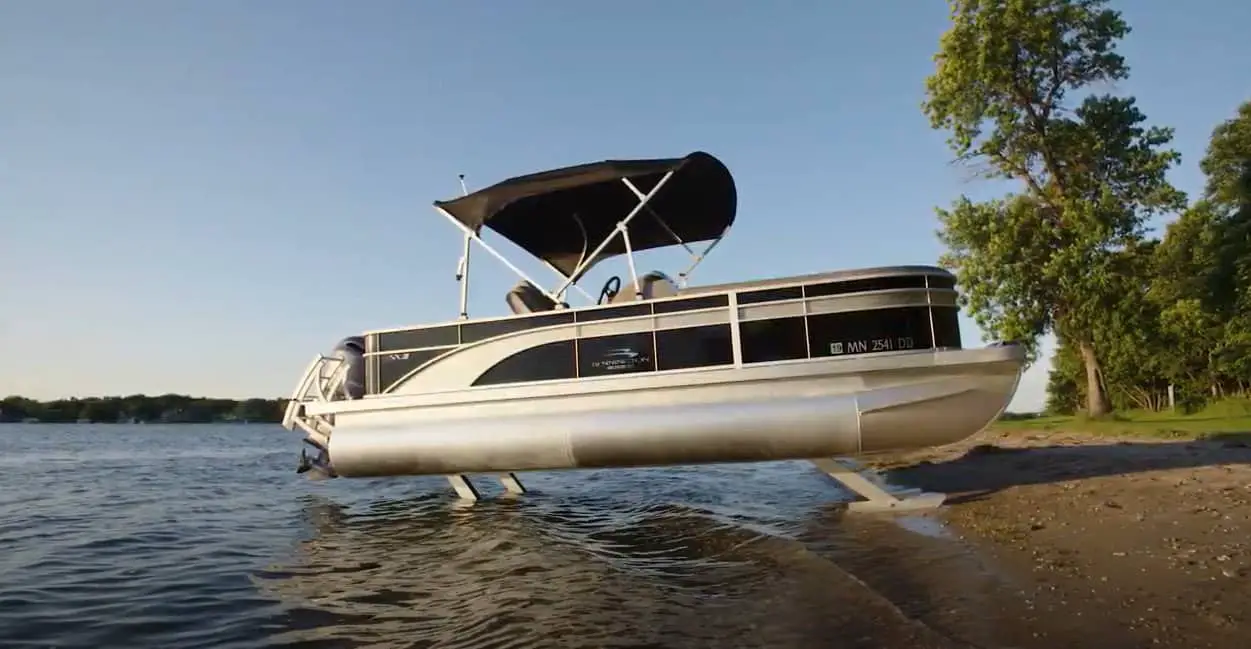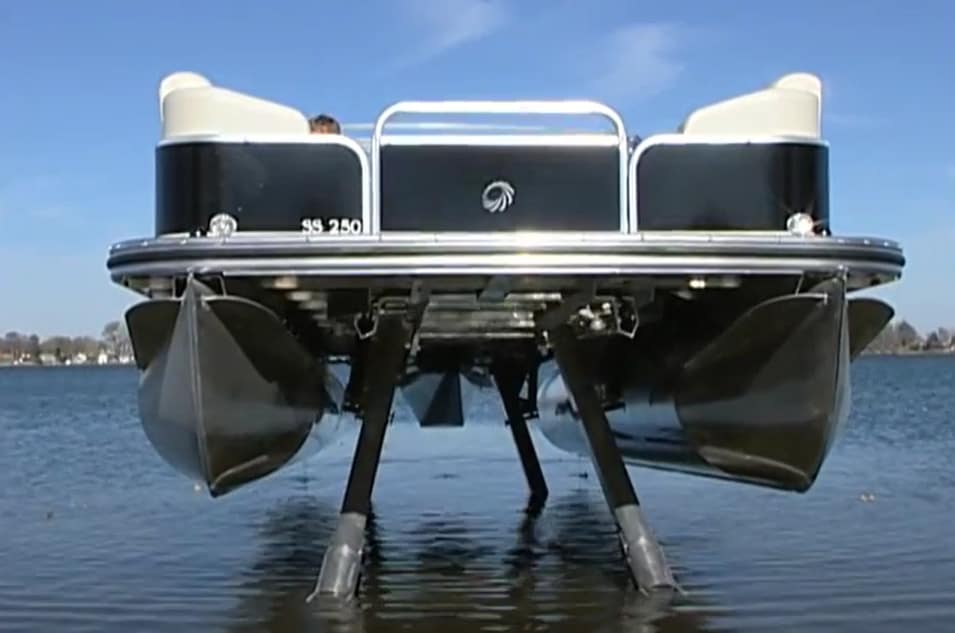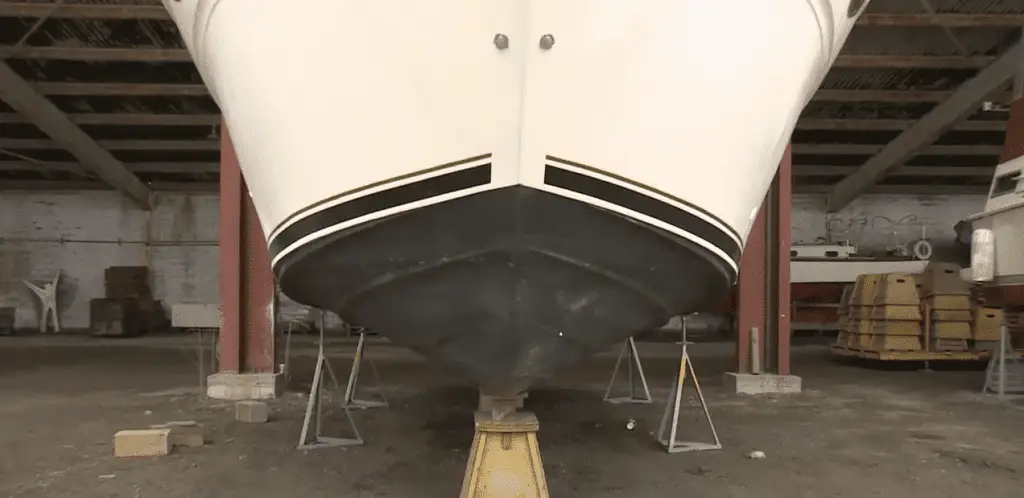The longer you own your boat, the more you’ll realize how important it is to invest in accessories that work to extend the life of your vessel. And while there are quite a wide range of pontoon boat accessories out there, sea legs are quickly becoming an essential for most boat owners.
Designed to lift your boat out of the water - even in the middle of the lake - sea legs minimize your pontoon’s exposure to moisture and may even keep you from having to tie a line to a dock. But there are lots of other benefits to having them installed, and this complete guide hopes to bring you everything you need to know about pontoon boat sea legs.
How Do Pontoon Boat Sea Legs Work?
Pontoon boat sea legs are installed directly against the bottom of your deck, and they attach to the same battery supply in your own boat. The minimum standard is at least a 750 cold cranking amp battery, but other brands may require at least 850 cold cranking amps. This then connects to a 12-volt pump hidden underneath one of your pontoon boat seats.
With a push-to-start mechanism, sea legs extend by way of the hydraulic pump which lifts the entire boat out of the water as though it were standing on a literal set of legs. Heights vary between sea leg designs and manufacturers, but the typical maximum height that sea legs can lift a pontoon should be around six feet out of the water.
We recommend the Deep Cycle Marine Battery by Optima.
Sea Legs vs Pontoon Boat Lifts
Pontoon boat lifts do pretty much the same thing, right? Well, not exactly. Although the principles behind sea legs and pontoon lifts are pretty similar, they work in completely different ways. For starters, sea legs attach directly to the bottom of your boat. That means you won’t have to steer to the dock to get your boat lifted out of the water.
Why Sea Legs Might Be Better Than Lifts
Disadvantages of Sea Legs Compared to Lifts
Are Sea Legs Expensive? The Cost of Sea Legs
Sea leg prices vary from manufacturer to manufacturer, and fluctuations in costing might also depend on the specific model of sea legs you’re buying. Needless to say, more advanced, robust legs are bound to hike up the prices.
Again, the cost of sea legs isn’t set in stone. But there are some averages and estimates you can use to get a better idea of how much you should expect to pay. For instance, sea legs for a two-tube pontoon boat will cost roughly $4,000 to $5,000. If you have a tritoon, expect prices to soar towards $6,000 to $7,000 for the sea legs alone.
Another thing you should factor in is the price of installation. Two-tube sea legs will run approximately $600 to $800 for installation, while sea legs for tritoons can easily add an extra $900 to $1100 to the total cost.
But it doesn’t end with installation. There are a bunch of other accessories for sea legs that might run the numbers a little higher. The most popular add-on for pontoon boat owners is the handy sea legs remote control which lets you operate your sea legs with a handheld controller. This can easily add up to $400 to the overall amount.
Where to Buy Sea Legs?

Presently, there aren’t a lot of brands that offer sea legs, so it’s really a niche accessory for pontoons. Nonetheless, there are two competing brands that offer quality sea legs complete with warranties and aftersales services.
Hewitt
Based in Nicollet, Minnesota, Hewitt is one of the leading manufacturers of boat lifts, docks, and other accessories. Their sea legs feature the standard straight design, but they also offer wide stance legs that work to give your boat more stability in mud, dirt, and uneven terrain. They also offer hydraulic I/O legs that work to reduce drag for performance boats.
Sea-Legs
The Sea-Legs brand has been around for quite a while, having sold some tens of thousands of sea leg sets to pontoon owners across the United States and Canada. Their selection of sea legs caters to buyers with both twin toons and tritoons, but they also offer canopy options as an add-on for even better performance in all sorts of conditions.
How Stable and Safe are Sea Legs?
Stories of people experiencing their boat tipping over while resting on sea legs are pretty easy to find, but don’t think that it’s bound to happen. The thing about sea legs is that they can be extremely safe and stable as long as you read the manual and understand the conditions they’re intended for.
Sea legs are not designed for all weather and water conditions. And all of those stories of people having their pontoon tip over are likely because of the lack of knowledge on where sea legs shouldn’t be used. These include:
High, Strong Winds or Rough Water
High wind speeds and strong currents can push against your pontoon’s surface area and put stress on the sea legs underneath. Most manufacturers recommend extending your sea legs to a minimum just so your boat is just slightly above water if there are prevailing winds. If the winds and currents are too strong all together, it might be best to avoid using the sea legs until they subside.
Muddy Underwater Conditions
If the floor of the body of water you’re in is too muddy or slippery, then your sea legs might not be able to establish proper stability or they can get stuck down and thus become difficult to retract. In this case, it would be ideal to navigate to an area where you can be more sure of the conditions under the water to provide your sea legs some traction.
Rocky Underwater Conditions
The same thing goes for rocky terrain. It’s highly discouraged for pontoon boat owners to deploy their sea legs if the underwater conditions are too rocky. The uneven terrain can cause the legs to slip and move with the current, increasing the risk of accidents and damages.
Alternatives to Sea Legs and Pontoon Lifts
So maybe you don’t have the budget for either sea legs or lifts, that’s okay. There are a couple of other ways to secure your boat after a day of fun and frolic under the sun and on the waves.
Dock
Docking your boat is the easiest and perhaps the cheapest way to store it, but it won’t protect your vessel from potential rot, mold, and mildew. Docking your boat at your local marina or at your own private property (if you have access to a body of water via your own dock) can be a great way to keep it safe while not in use.
Trailer
Trailer hitch to your pontoon and let you pull it out from the water with a truck or even a car. Sure, it’s almost always going to be tedious, and you will break a sweat during the process. But if you don’t want to risk your boat being soaked in water for extended periods of time at the dock, then a trailer is your best bet.
How Many Sea Legs Do Pontoons Need?
That really depends on the size of your vessel. Remember that most pontoon sea legs available on the market are designed specifically for boats that are at least 18 feet or a a maximum of 30 feet. So if you’re boat is longer or shorter than the provided range, you might not be eligible for sea legs at all.
That said, there really isn’t a number set in stone in terms of how many sea legs you need since even boats of the same length can vary in weight. Just keep in mind that the longer and heavier your vessel is, the more legs your dealer will likely recommend.
Laws, Permits, and Insurance
Pontoon sea legs have been around for a few decades, and they’re relatively safe and stable. But that doesn’t mean every jurisdiction lets you use them. Some states might not allow the use of sea legs for your own safety, and the safety of those you share the water with. So before you go ahead and buy a set of legs, make sure you check with your local coast guard and ask whether sea legs are legal in your area.
Finally, there’s the issue of insurance. It’s worth remembering that although sea legs are safe, they come with their own unique risks and dangers. And the last thing you would want would be to incur damages and injuries that aren’t covered by insurance. Since they attach to your boat as an aftersales accessory, sea legs are insured separately from the rest of your boat. Ask your provider about sea leg coverage to find out how you can protect yourself, your vessel, and other boat owners around you.
The Bottom Line
Sea legs offer unique benefits that many other kinds of docking and storage options don’t. By letting you lift your boat out of the water without having to steer to the nearest dock, hitch to a trailer, or maneuver into a lift, sea legs prove to be one of the most convenient options for instant, easy protection from the elements.
Of course, pontoon boat sea legs come at a pretty steep cost which means not everyone can afford them. But by making your boating experience easier, and by bumping up your boat’s resale value, sea legs prove to be a worthy investment.






